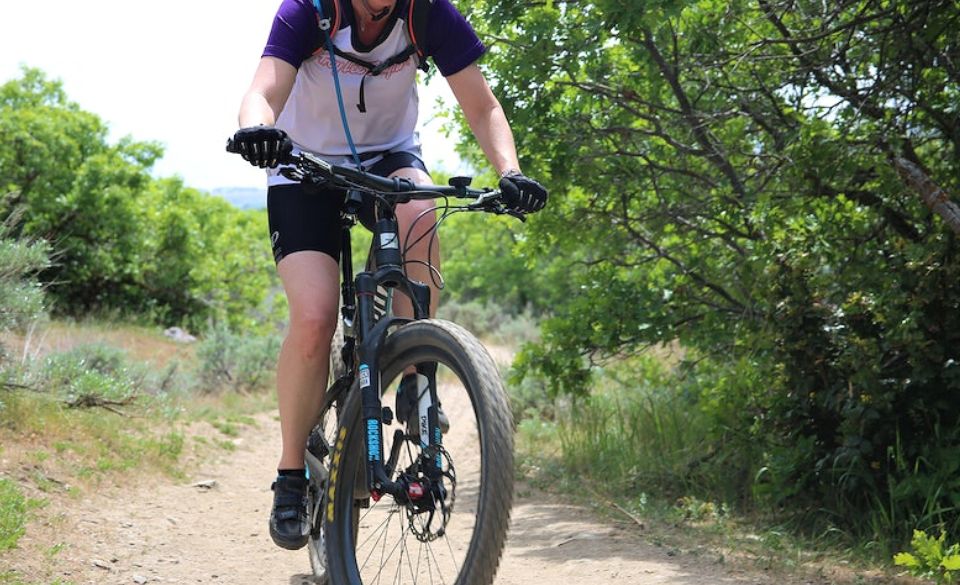
Common Mountain Biking Injuries and How to Avoid Them
Mountain biking is an incredibly popular activity and a great way to get outside, get some exercise and have a good time. Unfortunately, the fast-paced, exciting nature of mountain biking can also lead to injuries, which can be painful and in some cases prevent people from continuing to engage in their favorite outdoor pastime. Common mountain biking injuries can range from minor scrapes and bruises to more serious injuries such as fractures, sprains and torn ligaments. To ensure a safe and enjoyable biking experience, it’s important to educate yourself on common mountain bike injuries and steps you can take to avoid them.
One of the most common injuries sustained by mountain bikers is an ankle sprain. Ankle sprains typically occur when a rider attempts to make a sharp turn too quickly, which can cause the ankle joint to twist or rotate too far and stretch the ligaments. Ankle sprains can be mitigated by warming up before a ride and doing special exercises that strengthen the ankles. Additionally, mountain bikers should wear appropriate ankle supports and braces while riding to help prevent sprains.
Knee injuries are also very common among mountain bikers, especially when a rider spends too much time in a bent-knee position. Because the knees bear a lot of weight during rides, they’re more susceptible to overuse injuries, such as strains and cartilage damage. The best way to avoid this type of injury is to wear knee pads and properly fit your bike for your body to ensure your knees aren’t bent too much.
Lower leg injuries, ranging from bruises to fractures, are also fairly common among mountain bikers. These often occur when riders crash and are unable to quickly get their feet out of the way of the bike’s moving parts. To avoid these types of injuries, it’s important to have good technique and to know the terrain. Additionally, wearing shin guards can help protect the lower legs from impacts.
Hand and wrist injuries are among the most common and potentially serious injuries for mountain bikers. The hands and wrists are particularly vulnerable when a rider falls and can sustain fractures, wrist sprains, and even nerve damage. To minimize the chances of these types of injuries, mountain bikers should wear gloves and use proper technique when gripping their handlebars.
Spinal injuries are among the most serious injuries a mountain biker can sustain, resulting from falls or collisions with other objects. The risk of spinal injuries can be largely reduced by wearing a proper protective helmet and using proper body mechanics when maneuvering around obstacles.
Finally, neck injuries are also highly common among mountain bikers, resulting from falls and impacts with obstacles. To reduce the risk of neck injuries, it’s important to wear a properly fitting helmet and to use good body mechanics while riding.
In conclusion, common mountain bike injuries range from minor bruises to more serious spinal and neck injuries. In order to minimize the risk of experiencing any of these injuries, it’s important to educate yourself on proper technique and protective gear and to adhere to all safety guidelines while riding. Mountain biking can be a great activity, and by taking all the necessary precautions, you can ensure you have an enjoyable, safe, and injury-free experience.
How To Avoid Mountain Bike Injuries
Mountain biking is an exciting and rewarding experience, but it also carries a certain amount of risk. While there are no guarantees in life, there are some steps you can take to minimize the chances of getting injured while mountain biking. The following tips can help keep you safe and avoid mountain bike injuries:
1. Wear the appropriate safety gear. Helmets, gloves, and pads are essential for protecting yourself from crashes and falls. Make sure your helmet meets safety standards and always replace it after any major crash or impact.
2. Be aware of your surroundings. Always stay focused and alert while mountain biking, and be aware of obstacles and terrain changes. Pay attention to any nearby hazards and be aware of your speed. Be especially careful when riding on unfamiliar or new trails.
3. Ride within your skill level. Don’t try to tackle trails that are too difficult for your ability level. If you are having trouble with a particular drop, jump, or technical section, try an alternate route.
4. Maintain your bike regularly. Before embarking on a ride, check your bike for loose parts, worn out tires, or brakes. Make sure all fittings are tight and that the chain is properly lubricated.
5. Remain hydrated. Drink plenty of water before, during, and after your rides to avoid dehydration.
6. Stretch before and after each ride. Stretching helps reduce the risk of injury and prepares your muscles for the ride. Incorporate dynamic stretches such as leg swings, arm circles, and torso twists into your routine.
7. Warm up and cool down. Spend 10 minutes warming up before you start riding. This should involve some light cardiovascular exercises such as jogging and jumping jacks. After your ride, spend 5 minutes cooling down with light stretches.
8. Don’t ride when you’re tired. If you feel exhausted before or during a ride, take a break or end your ride early.
By following these tips, you can help minimize the risk of injuries while mountain biking. Remember, safety should always be your top priority. Be sure to always wear the appropriate safety gear, stay alert, and take precautions when on the trails. With the proper safety measures in place, you can enjoy mountain biking safely and injury-free.


